This 600 lb, (272 kg) boulder was graciously donated to us after a group of representatives from the University of Waterloo attended a mine tour at the Lakeshore Gold, Timmins West Mine in April 2011, located just south of Timmins, Ontario. Timmins is situated approximately 550 km northwest of Toronto.
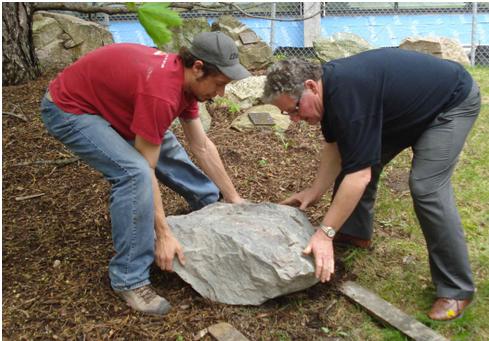
The word "aphyric" may be used to describe the texture of an igneous rock if it has a fine-grained groundmass (you can’t see distinct crystals), as well as an absence of any phenocrysts (any other large crystals in the rock). In other words, the rock is fine grained throughout without any distinct crystals anywhere. For this rock to form it would have to have cooled at very high temperatures, close to the melting point of the rock.
This rock initially formed as a pyroxenite, a dark green igneous rock which consists mostly of the minerals pyroxene and olivine. It was then intruded upon by another igneous body and this has caused the felsic syenite to form.
The term dike refers to the orientation of the magma as it cooled. The magma cooled into rock below ground as the magma was rising to the surface. Dikes are generally vertical formations and form at steep or nearly right angles to the surface.
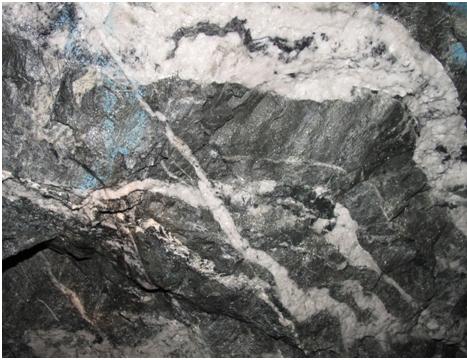
The Lakeshore Gold Timmins West Mine actively mines both the mafic area with the pyroxenite (above) as well as the felsic area with the syenite (below). As shown in the photographs, there is a substantial amount of quartz veins intruding both rocks. Our boulder has come to us from the more felsic area of the mine.
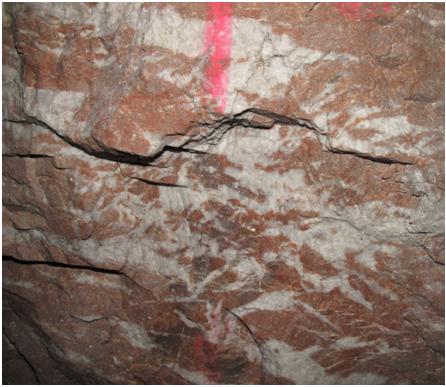
This rock is an ore of gold. Gold is not new to Timmins. In fact, the city has even earned the nickname, “The City with a Heart of Gold”. On June 6, 1909 two prospectors discovered a quartz vein with flecks of gold. The vein led to a large dome-like structure. After blasting the rock, they uncovered the “Golden Staircase”, a rich vein of gold. This discovery led to the gold rush at the Timmins Camp, which in turn created some of the historic gold mines of that region. The formation of the Dome Mine (now owned by GoldCorp), is a direct result of this find and it is the longest-lived continuously operated mine in Canada which still yields gold today.
The Hollinger Mine began operation the following year, in 1910, and operated in Timmins to produce nearly 20 million ounces of gold within 50 years. It has produced more gold than any other single mining operation in Canada.
Finally, the MacIntyre mine opened in 1912 and in its 76 years of operation it produced 10.5 million ounces of gold.
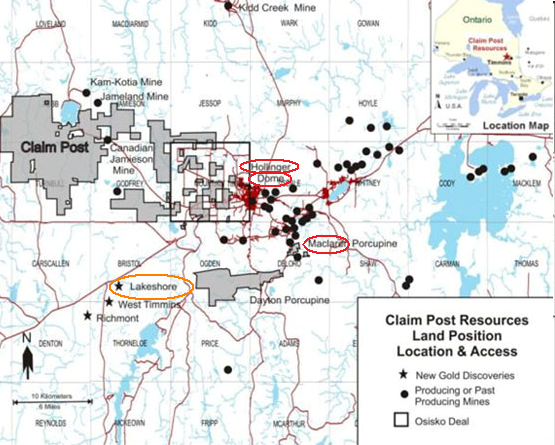
Photo courtesy of Claim Post Resources.

Photo courtesy of Yorbeau Resources.
The Lakeshore Gold had already mined a total of 43,500 ounces of gold by the end of 2010. The deposit is huge and so the mine is being constructed to last as long as possible. Wire meshing and rock bolts hold the ceiling and upper walls in place and huge tunnels are created so that it is easy to travel by vehicle to and from areas being worked on.
Safety is also essential to the mine. Safety equipment must be worn at all times (safety glasses, thick rubber boots, a hard hat, protective gloves, a head lamp, a belt, and of course a full-body jump suit). As well, blasting of areas of the mine will not begin until it is confirmed that every employee who is on shift at that time as well as who was on the previous shift is accounted for.
By Katherine Feick
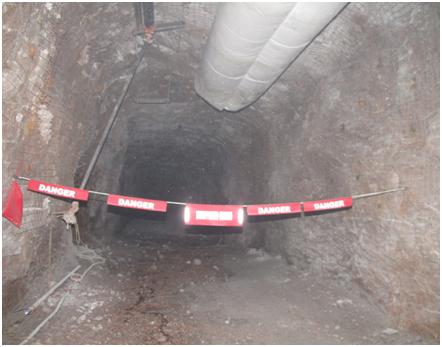
We, at the University of Waterloo, would like to say a special thank you to Lakeshore Mine and their employees for making the experience so memorable and safe, as well as for the gorgeous addition to our rock garden. Further thanks is also due for also sending the University of Waterloo mining equipment, which will soon be added to our new mine tunnel display in the tunnel between Centre for Environmental and Information Technology (EIT) and Chemistry.